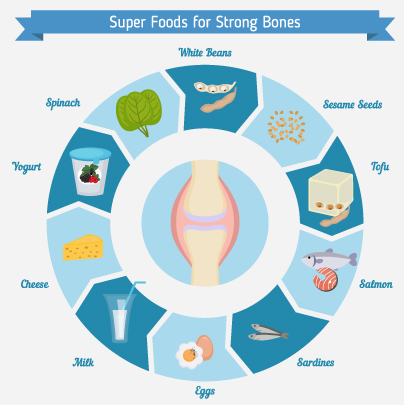
This article was published on: 04/6/17 7:26 AM
A broken bone is called a fracture. In order for a fracture to heal, the bones must be held in the correct position and protected. Soon after a fracture occurs, the body acts to protect the injured area, and forms a protective blood clot and callus around the fracture. The fracture closes and the callus is absorbed. Depending upon the type of fracture, this healing process may take up to a year.
As soon as one of your bones break, your body automatically starts to fix the injury. It takes time for a bone to heal and this depends on a lot of factors, such as the person’s age and location of the break. Within a couple of hours, a blood clot forms around the break. Inside the blood clot, there are special cells called phagocytes which begin cleaning the bone fragments and kill any germs which might have gotten in or around the break. Phagocytes are a part of the immune system. Next, a soft callus made mostly of collagen is created around the fracture by another special group of cells called chondroblasts. This stage can last anywhere from 4 days to 3 weeks.
A hard callus forms next as osteoblast cells create new bone, adding minerals to make it hard. This stage typically begins 2 weeks after the break, and ends somewhere between the 6th and 12th week. Lastly, the bone is remodeled. Special cells called osteoclasts break down extra bone around the fracture until it’s completely healed and returned to its original shape. Bone remodeling is a very slow process which can take anywhere from 3 to 9 years to complete.
Bones provide the structure of your body. They protect your organs and anchor your muscles. Weight-bearing activities and adequate calcium consumption are crucial for building strong bones and reducing the risk of osteoporosis, which can lead to bone fractures . Changing your diet can help aid bone healing after a fracture and can improve your bone health.
Calcium is a mineral which is used by our body for healthy bones and teeth and also for the proper functioning of the heart, muscles, and nerves. Calcium must be gained through food because the body cannot produce it. Most adults require calcium intake between 1,000 and 1,300 milligrams per day. The best food sources of calcium include yogurt, milk, soy milk, cheese, tofu with calcium, soybeans, broccoli, almonds and almond butter.
But, calcium is useless without vitamin D because this powerhouse vitamin moves calcium from the gastrointestinal tract to other parts of the body. Most people require at least 600 or 800 international units of vitamin D per day. Few foods naturally contain vitamin D, so focus on consuming the ones that do to get your daily dose. Fatty fish such as salmon, mackerel and tuna are some of the best sources. Most milk is fortified with vitamin D, and cheese, egg yolks and beef liver contain smaller amounts. Mushrooms also contain vitamin D, and some varieties are even being treated with UV light, which dramatically increases their vitamin D content.